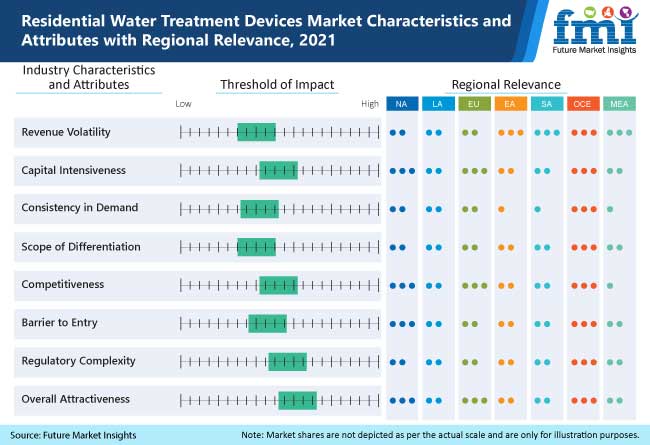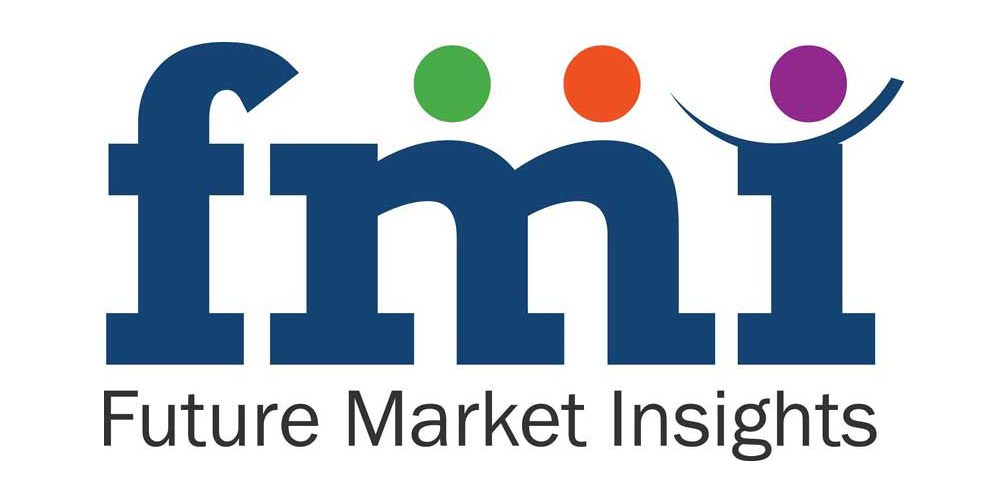According to a recent report by Future Market Insights (FMI), the residential water treatment devices market is expected to surpass a valuation of US$ ~23 Bn in 2021 and at a CAGR of approximately ~5% through 2031.
Market players are investing in cutting-edge water filtration technologies such as carbon nanotubes and sophisticated membrane systems. The discovery of new, uncommon contaminants, the promulgation of new water quality regulations, and cost have all influenced the development and application of water treatment systems.
Reverse osmosis, nano filtration, dialysis, and electro-dialysis are examples of membrane techniques. These systems are high-tech and have relatively expensive capital and operating expenses, but they can discharge vast amounts of highly treated water.
Furthermore, photocatalytic water treatment has gained popularity in recent years due to its efficacy in purifying contaminated water. Toxic chemicals are removed from water using photocatalysts and ultraviolet (UV) radiation. Panasonic, for example, created a technique that links the photocatalyst (titanium dioxide) to a commercial adsorbent and a catalyst called zeolite, enabling photocatalyst separation and recovery from water for reuse. Titanium dioxide has the ability to mineralize a variety of organic molecules, resulting in safe end products. To separate compounds, the catalyst uses UV energy from the sun or artificial light.
Besides this, connected water filters are an emerging trend in smart home products. By supplying continuous data to app platforms, smart water filters may perform a wide range of functions, from monitoring water quality to informing consumers their daily water intake.
For instance, IN 2019, Xiaomi launched three new models in the India market. This includes a smart water purifier, which contributes to the country’s growing Internet of Things (IoT) ecosystem. The Mi Smart Water Purifier (RO+UV) is a product designed exclusively for India. It is the only smart and DIY water purifier available, according to the manufacturer.
- To Get a Sample Copy of the Report visit @ https://www.futuremarketinsights.com/reports/sample/rep-eu-1299
2016-2020 Global Residential Water Treatment Devices Market Outlook Compared to 2021-2031 ForecastAs per FMI, demand is projected to grow at a healthy 5% CAGR over the forecast period, in comparison with the 3% CAGR registered between 2016 and 2020.
Residential water treatment devices remove harmful chemicals, gases, suspended solids, and biological pollutants from drinking water, making it safe to drink. Sales have grown steadily over the years as a result of improved availability of purification and filtration devices, a diverse product offering, and population growth.
However, the latter has also resulted in increased contamination of fresh water sources and the construction of new residential buildings, thereby propelling sales in the market.
Pollution of surface and ground water resources from agricultural, industrial, and home sources is the world’s greatest water challenge. It has long been recognized that urbanization has a negative impact on water quality in general. Given that practically all drinking and irrigation water demand is met by freshwater resources, the falling water quality index of freshwater resources is a major source of worry.
Chemically polluted water, unlike biological contamination, has no direct effect on human health; however, it causes buildup in the body and adverse effects. As a result, in the residential sector, customer choice is shifting toward water treatment equipment such as water treatment devices, ensuring the consumption of water with an excellent water quality index. This factor is complementing the growth of the market.
Contaminated water, according to the World Health Organization (WHO), can spread diseases like diarrhea, cholera, dysentery, typhoid, and polio. Each year, 485 000 diarrheal fatalities are estimated to be caused by contaminated drinking water. As a result of the rise in such ailments, demand is expected to remain high over the assessment period.

Request Complete TOC Of this Report @ https://www.futuremarketinsights.com/toc/rep-eu-1299
Key Takeaways:
- Based on product type, demand for water filters is projected to remain high over the assessment period, growing at a 4% CAGR.
- In terms of price range, sales of mid-range devices are projected to increase at a 5% CAGR through 2031.
- In terms of installation type, demand in the point-of-entry segment is anticipated to increase at a 6% CAGR.
- Sales through online retailing are projected to grow at a 6% CAGR over the forecast period.
Impact of COVID-19 on the MarketPrior to the COVID-19 outbreak, there was a slow but steady increase in global demand for household water treatment devices. The two main challenges that affect household water treatment equipment manufacturers are safety and government orders made at the federal, state, and local levels.
Due to the initial shutdown, social distance norms, and limited local and state government office activities, water treatment equipment manufacturing and installation are severely hampered. In regions where it is permissible and safe to do so, players are still selling water purification systems with minimum labour.
Furthermore, the home water treatment equipment industry has been hampered by a scarcity of workers, hefty taxes, and rigorous government regulations. The market, on the other hand, is gradually reflecting prospective prospects as economies begin to recover.
Who is winning?Leading manufacturers of residential water treatment devices are A.O. Smith Corporation, Kent Supreme, Eureka Forbes, Panasonic, Aqua Care, 3M, Aquasana, Waterwise Inc., Everpure, and GE Appliances among others who are focused on aggressive promotional strategies and advertisements that have driven sales growth of residential water treatment devices globally. For instance:
- Water-Right, Inc., a water treatment solutions supplier, was bought by A. O. Smith Corporation in 2019. All Water-Right subsidiaries, real estate, and sister business Mineral-Right, Inc. were included in the deal.
- Water Filters
- Distillation Unit
- Others
By Price Range:
- Economy (Below US$30)
- Mid-range (US$30-US$100)
- Premium (Above US$ 100)
By Installation Type:
- Point of Use
- Point of Entry
By Sales Channel:
- Hypermarkets/ Supermarkets
- Convenience Stores
- Specialty Stores
- Online Retailing
- Others Sales Channel
By Region:
- North America
- Latin America
- Europe
- East Asia
- South Asia
- Oceania
- MEA
